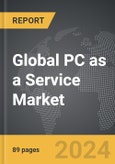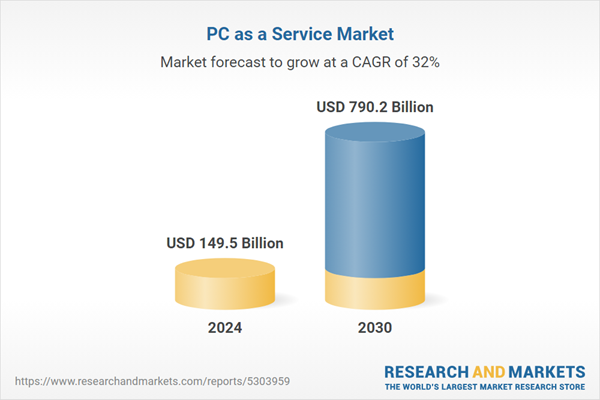Global PC-Based Automation Market - Key Trends & Drivers Summarized
How Has the PC-Based Automation Market Evolved Over the Years?
The PC-based automation market has evolved considerably over the past few decades, moving from basic computing solutions to advanced systems that play a pivotal role in modern manufacturing, process control, and industrial automation. Initially, automation relied heavily on proprietary hardware and custom-built controllers like programmable logic controllers (PLCs) and distributed control systems (DCS). These systems were tailored specifically for industrial applications, but they had limitations in terms of flexibility, scalability, and cost. As personal computers (PCs) became more powerful, affordable, and widespread, industries began integrating them into automation processes, leveraging their processing power, open architecture, and connectivity features.PC-based automation provides significant advantages over traditional systems, including the ability to handle more complex control algorithms, support for high-level programming languages, and seamless integration with enterprise systems and the internet of things (IoT). Over time, it has enabled companies to reduce operational costs, improve flexibility in manufacturing, and accelerate the adoption of digital transformation initiatives. With advancements in hardware, software, and connectivity, PC-based automation has become a critical solution for industries ranging from automotive to pharmaceuticals, enabling smarter factories and more efficient production lines. Today, these systems are integral to Industry 4.0, offering real-time data processing, advanced analytics, and enhanced automation control across diverse sectors.
How Are Technological Advancements Shaping the PC-Based Automation Market?
Technological advancements have been the driving force behind the expansion of the PC-based automation market, continuously pushing the boundaries of what can be achieved with automation systems. One of the key developments has been the increasing power and affordability of computing hardware, which has enabled more complex automation processes. Modern industrial PCs (IPCs) are designed to withstand harsh environmental conditions, such as extreme temperatures, dust, and vibrations, while delivering high computational performance. This makes IPCs ideal for industrial automation applications that require high-speed processing, multitasking, and the ability to handle large volumes of data in real time.The rise of software-based control solutions has also transformed PC-based automation. Unlike traditional systems, which relied on proprietary hardware, PC-based automation uses standardized software platforms that offer greater flexibility and scalability. Open-source software, along with advanced operating systems like Linux and Windows, allows for the easy integration of new functionalities, including artificial intelligence (AI), machine learning, and predictive maintenance algorithms. These innovations have enabled businesses to improve automation efficiency, reduce downtime, and optimize production processes by analyzing real-time data and responding quickly to changes on the factory floor.
Another key technological driver is the integration of IoT and cloud computing into PC-based automation systems. IoT connectivity allows industrial equipment to communicate with each other, generating vast amounts of data that can be processed and analyzed in real time. Cloud platforms facilitate remote monitoring, control, and data analytics, providing businesses with insights into their operations and allowing them to make informed decisions quickly. Additionally, advances in cybersecurity technologies have enhanced the safety and reliability of PC-based automation systems, addressing the growing concerns around data breaches and cyber threats in connected manufacturing environments.
How Is Changing Industry Demand Affecting the PC-Based Automation Market?
Industry demand has significantly influenced the growth and development of the PC-based automation market, particularly as businesses seek greater flexibility, cost-efficiency, and scalability in their automation solutions. One of the major shifts in demand has been the move toward Industry 4.0, where smart factories and connected machines play a central role in improving productivity, efficiency, and decision-making. PC-based automation provides the computing power and flexibility needed to implement advanced automation strategies, such as robotics, AI-driven decision-making, and data analytics. This shift has prompted industries to adopt more flexible and open automation systems, as they look to replace rigid, proprietary systems with more versatile, software-based platforms.The demand for greater customization and shorter product cycles has also impacted the market. In industries such as automotive and electronics, where product designs and production processes are constantly evolving, PC-based automation offers the flexibility to adapt quickly to new manufacturing requirements. These systems allow manufacturers to implement changes to production lines without the need for extensive reprogramming or hardware modifications, reducing downtime and increasing overall efficiency. Furthermore, businesses are increasingly looking for solutions that can integrate with enterprise resource planning (ERP) and manufacturing execution systems (MES), providing real-time visibility into production data and enabling more effective resource management.
The rise of sustainability initiatives has further contributed to changing industry demands. Many companies are focused on reducing energy consumption, waste, and carbon emissions within their manufacturing processes. PC-based automation systems, with their ability to monitor and optimize energy usage in real time, have become essential tools for achieving these sustainability goals. By leveraging advanced sensors, data analytics, and automation control, businesses can reduce energy waste, improve operational efficiency, and make their production processes more environmentally friendly.
What Factors Are Driving the Growth of the PC-Based Automation Market?
The growth of the PC-based automation market is driven by several key factors, including technological advancements, industry demand for flexibility, and the increasing adoption of Industry 4.0 solutions. One of the primary drivers is the increased need for cost-effective and scalable automation solutions. Traditional automation systems, such as PLCs, often require expensive proprietary hardware and complex programming, which can be time-consuming and costly to implement and maintain. PC-based automation, on the other hand, uses off-the-shelf hardware and standardized software, reducing overall costs while providing greater flexibility to scale and adapt to changing production requirements.Another major growth driver is the integration of IoT and cloud-based technologies. As industries become more connected, the demand for systems that can collect, analyze, and act on data in real time has grown significantly. PC-based automation systems, with their ability to process large amounts of data and interface with IoT devices, are ideal for supporting smart factory initiatives. These systems enable businesses to monitor and control their operations remotely, improving responsiveness, reducing downtime, and enhancing operational efficiency. The ability to integrate with cloud platforms also allows businesses to access advanced data analytics tools, providing deeper insights into production processes and enabling predictive maintenance strategies that minimize unplanned downtime.
The push toward sustainability and energy efficiency is another key driver. As companies strive to meet sustainability goals and comply with environmental regulations, they are increasingly turning to automation systems that can help them optimize energy usage and reduce waste. PC-based automation allows for real-time monitoring and control of energy consumption, providing businesses with the tools they need to reduce their carbon footprint and improve operational efficiency. Additionally, the growing complexity of modern manufacturing processes has driven demand for more sophisticated automation solutions. PC-based systems can handle the high levels of complexity required for tasks such as robotics, motion control, and machine vision, making them well-suited for industries such as automotive, aerospace, and electronics, where precision and adaptability are critical.
Report Scope
The report analyzes the PC as a Service market, presented in terms of market value (US$ Thousand). The analysis covers the key segments and geographic regions outlined below.- Segments: Component (Hardware, Software, Services); Enterprise Type (SMEs, Large Enterprises); Vertical (IT & Telecom, BFSI, Healthcare & Life Sciences, Education, Government, Other Verticals).
- Geographic Regions/Countries:World; United States; Canada; Japan; China; Europe (France; Germany; Italy; United Kingdom; and Rest of Europe); Asia-Pacific; Rest of World.
Key Insights:
- Market Growth: Understand the significant growth trajectory of the Hardware Component segment, which is expected to reach US$251.1 Billion by 2030 with a CAGR of a 26.1%. The Software Component segment is also set to grow at 37% CAGR over the analysis period.
- Regional Analysis: Gain insights into the U.S. market, valued at $44.3 Billion in 2024, and China, forecasted to grow at an impressive 31% CAGR to reach $119.1 Billion by 2030. Discover growth trends in other key regions, including Japan, Canada, Germany, and the Asia-Pacific.
Why You Should Buy This Report:
- Detailed Market Analysis: Access a thorough analysis of the Global PC as a Service Market, covering all major geographic regions and market segments.
- Competitive Insights: Get an overview of the competitive landscape, including the market presence of major players across different geographies.
- Future Trends and Drivers: Understand the key trends and drivers shaping the future of the Global PC as a Service Market.
- Actionable Insights: Benefit from actionable insights that can help you identify new revenue opportunities and make strategic business decisions.
Key Questions Answered:
- How is the Global PC as a Service Market expected to evolve by 2030?
- What are the main drivers and restraints affecting the market?
- Which market segments will grow the most over the forecast period?
- How will market shares for different regions and segments change by 2030?
- Who are the leading players in the market, and what are their prospects?
Report Features:
- Comprehensive Market Data: Independent analysis of annual sales and market forecasts in US$ Million from 2024 to 2030.
- In-Depth Regional Analysis: Detailed insights into key markets, including the U.S., China, Japan, Canada, Europe, Asia-Pacific, Latin America, Middle East, and Africa.
- Company Profiles: Coverage of players such as Arrow Electronics, ATEA Group, Capgemini, CHG-Meridian, CompuCom Systems and more.
- Complimentary Updates: Receive free report updates for one year to keep you informed of the latest market developments.
Some of the 34 companies featured in this PC as a Service market report include:
- Arrow Electronics
- ATEA Group
- Capgemini
- CHG-Meridian
- CompuCom Systems
- Computacentre
- Computer System Australia
- Dell Technologies
- Hemmersbach
- Hewlett-Packard
- Innova Technology Services
- Intel Corporation
- Lenovo
- Microsoft
- Panasonic Corporation
- PC Connection
- RAM-Tech PC Solutions
- Service IT Direct
- SHI International
- Softcat
- StarHub
- SYNNEX Corporation
- Telia
- Utopic Software
- XMA LTD
- Zones
This edition integrates the latest global trade and economic shifts into comprehensive market analysis. Key updates include:
- Tariff and Trade Impact: Insights into global tariff negotiations across 180+ countries, with analysis of supply chain turbulence, sourcing disruptions, and geographic realignment. Special focus on 2025 as a pivotal year for trade tensions, including updated perspectives on the Trump-era tariffs.
- Adjusted Forecasts and Analytics: Revised global and regional market forecasts through 2030, incorporating tariff effects, economic uncertainty, and structural changes in globalization. Includes historical analysis from 2015 to 2023.
- Strategic Market Dynamics: Evaluation of revised market prospects, regional outlooks, and key economic indicators such as population and urbanization trends.
- Innovation & Technology Trends: Latest developments in product and process innovation, emerging technologies, and key industry drivers shaping the competitive landscape.
- Competitive Intelligence: Updated global market share estimates for 2025, competitive positioning of major players (Strong/Active/Niche/Trivial), and refined focus on leading global brands and core players.
- Expert Insight & Commentary: Strategic analysis from economists, trade experts, and domain specialists to contextualize market shifts and identify emerging opportunities.
Table of Contents
Companies Mentioned (Partial List)
A selection of companies mentioned in this report includes, but is not limited to:
- Arrow Electronics
- ATEA Group
- Capgemini
- CHG-Meridian
- CompuCom Systems
- Computacentre
- Computer System Australia
- Dell Technologies
- Hemmersbach
- Hewlett-Packard
- Innova Technology Services
- Intel Corporation
- Lenovo
- Microsoft
- Panasonic Corporation
- PC Connection
- RAM-Tech PC Solutions
- Service IT Direct
- SHI International
- Softcat
- StarHub
- SYNNEX Corporation
- Telia
- Utopic Software
- XMA LTD
- Zones
Table Information
| Report Attribute | Details |
|---|---|
| No. of Pages | 170 |
| Published | December 2025 |
| Forecast Period | 2024 - 2030 |
| Estimated Market Value ( USD | $ 149.5 Billion |
| Forecasted Market Value ( USD | $ 790.2 Billion |
| Compound Annual Growth Rate | 32.0% |
| Regions Covered | Global |









